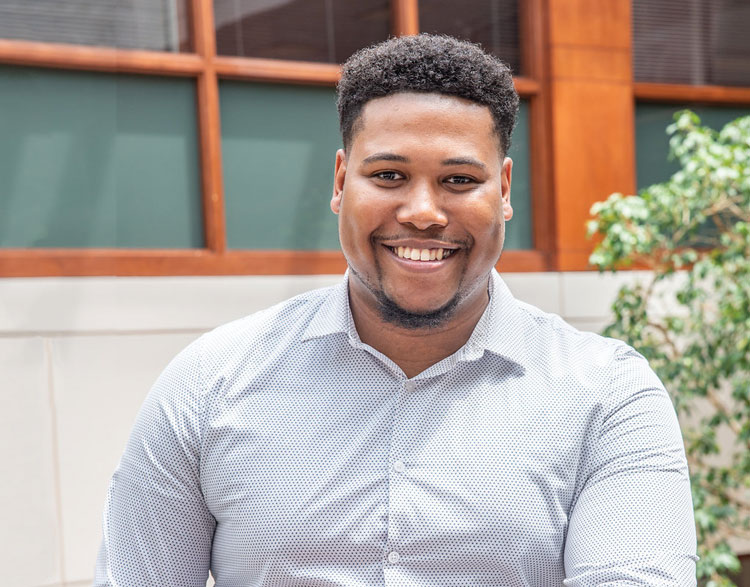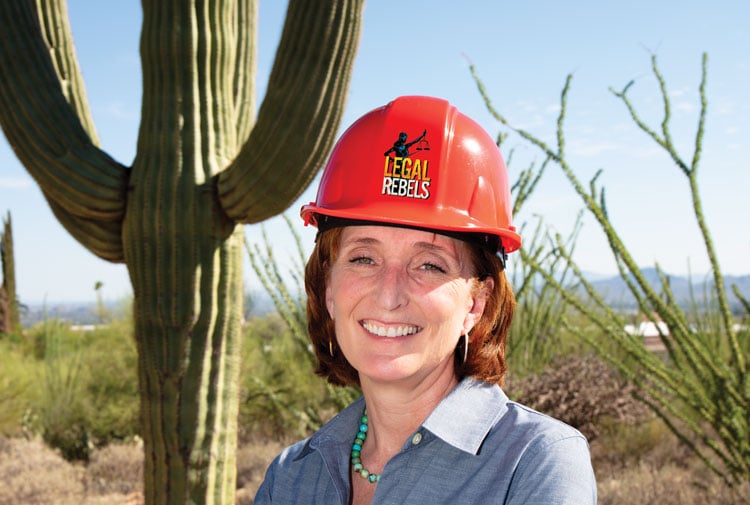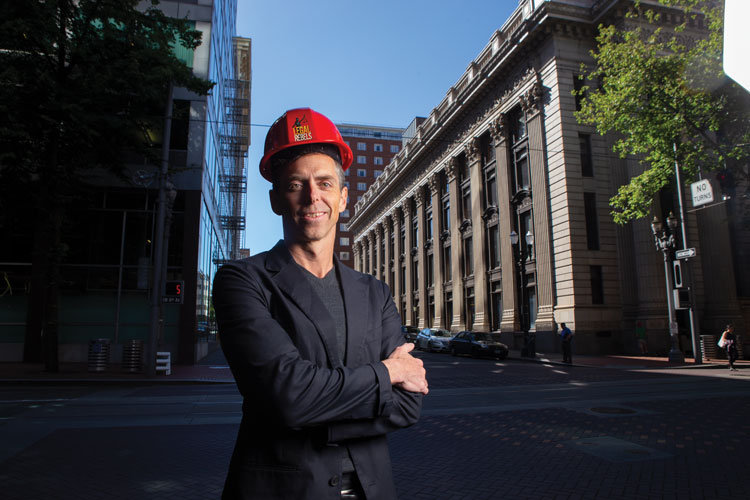2018 Legal Rebels: Knocking down the barriers of convention and building the profession anew

Photograph of Miguel Willis by David Fonda Photography.
Law in the Last Frontier
Miguel Willis, 29, has already created his own job—twice. As a 1L at the Seattle University School of Law, he created an online textbook marketplace for law students. As a 2L, he started the Access to Justice Tech Fellows Program, which awards 10-week summer fellowships to law students working on using technology to improve access to legal services.
“I raised enough funding for the fellows, but I didn’t have enough to run the program,” he says. “So I, in essence, became a fellow in my own program.”
That fellowship sent Willis to Alaska, where he helped the Alaska Court System develop its Justice for All Project for improving A2J. Most of Alaska’s 220 towns and villages are many miles away from urban areas where lawyers congregate. They’re often not connected to the big cities with roads. And for Alaska Natives, who often live in the villages, there can also be language and cultural barriers.
Through the Justice for All Project, the legal community works with existing medical and law enforcement providers, who are more likely to be in the villages, to screen people for potential legal needs. Willis also created a social network analysis for the project—something he had to learn from scratch.
Willis is arguably now doing a third job he created himself: He’s the Law School Admission Council’s first presidential innovation fellow. He’s working with LSAC on creating more diversity in the pipeline of law students.
—Lorelei Laird

Photograph of Michele Mirto by Bob Torrez Photography.
Stepping Up A2J, Cutting Cost
Michele Mirto’s commitment to access to justice started as a little girl, donating to the food bank and homeless shelter. But it wasn’t until 2017 that she learned she’d end up turning the legal aid business model on its head.
As executive director of Step Up to Justice, a Tucson, Arizona-based privately funded legal aid nonprofit, Mirto, 54, wields a shoestring budget and just three staff members armed with legal technology. They lead an army of volunteer lawyers in resolving low-income clients’ civil matters—mostly family law but also guardianship, consumer law, bankruptcy and wills and probate.
Step Up to Justice’s budget—$215,000 in 2017—is 95 percent smaller than the average $4 million budget of a legal aid provider. In 2017, Mirto’s firm provided $1 million worth of free legal services as its staff coordinated 114 volunteer lawyers to serve 1,000 clients—a 20 percent increase in civil legal services in Pima County. Step Up to Justice closes cases for $215, she says, rather than $1,800 per case, which is the cost of traditional legal aid providers.
The technology includes a case information system with data on clients, donors and lawyers. Users log on remotely to create case notes and share documents—giving lawyers more work time and clients less hassle.
“It’s a different model,” Mirto says. “Our staff is not in itself delivering the legal services, so it’s a huge cost savings.”
—Angela Morris

Photograph of James Beckett by David Mudd.
Scoring Legal Work
In his former job as chief business development officer at Frost Brown Todd in Louisville, Kentucky, James Beckett was hungry to learn how his firm could do better.
“In this highly uber-competitive, commoditized world of legal services, how do we exceed the expectations of our clients and increase our market share and actually have something to differentiate ourselves other than puffery?” he asks. “And I thought there can’t be any other better way than performance.”
But it was often hard for Frost Brown to get that kind of performance data. So Beckett ended up making his own scorecard. He was on the verge of leaving his firm to commercialize that idea when he met Mark Smolik, general counsel of DHL Supply Chain Americas. Smolik had also created his own scorecard for DHL’s outside counsel—and he was interested in commercialization.
That’s how the two formed Qualmet, a two-year-old startup that offers corporate legal departments a web-based tool for measuring their outside counsel’s performance—and the value it brings to their bottom lines. Beckett likens it to the kind of performance evaluation that any large business might do on its employees, but applied to outside counsel. By aggregating that kind of data, Qualmet also plans to offer its customers the ability to measure outside counsel’s performance against industry-wide benchmarks.
Beckett, 50, believes measuring performance benefits both sides of that relationship. Outside lawyers can both know where they stand and get a sense of what’s important to the client—and therefore how they can become that client’s go-to lawyers.
“At the end of the day, this really gets down to behavior,” he says. “And if we don’t take the time to really unpack behavior, then our ability as legal professionals is going to be hindered.”
—L.L.

Photograph of Stephen Manning by Sung Park.
Replicating Immigrant Assistance
In the summer of 2014, Stephen Manning was focused on representing mothers with young children in family detention—many of them fleeing violence in Central America. They were being deported much more quickly than usual, and there were hundreds of potential clients and only a handful of lawyers who generally had to fly home at the end of the week.
So Manning, 48, imported something he thought would help: the Innovation Law Lab, a case management system he’d developed for collaboration at his own law firm, the Immigrant Law Group in Portland, Oregon. The system enables a kind of crowdsourcing, allowing teams to pick up pieces of cases as their skills and time allow.
It’s not just collaboration. The Innovation Law Lab also captures details about each case and puts them into a database in an attempt to identify—and then replicate—the characteristics of those cases that were successful. “We need to look at … those things that are actually done in cases, not just what lawyers think they do,” says Manning. “And then turn those into highly repeatable processes so that we can scale.”
And it’s been successful: In 2016, the lab got more than 30,000 people released from detention, a 99 percent success rate.
—L.L.



